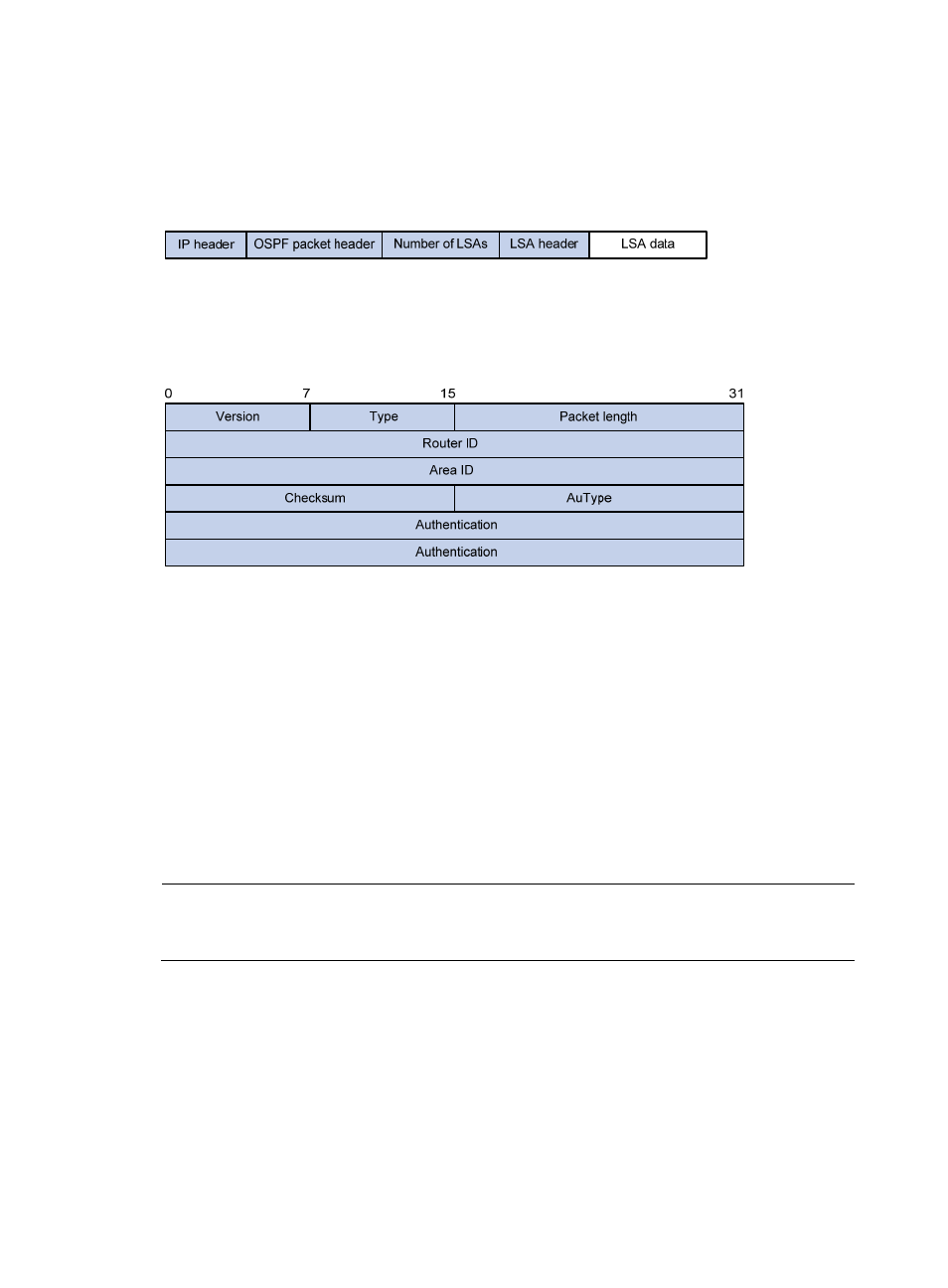Ospf packet formats, Ospf packet header, Hello packet – H3C Technologies H3C SR8800 User Manual
Page 84

68
OSPF packet formats
OSPF packets are directly encapsulated into IP packets. OSPF uses the IP protocol number 89. The format
of an OSPF LSU packet is shown in
.
Figure 24 OSPF packet format
OSPF packet header
OSPF packets are classified into five types that have the same packet header.
Figure 25 OSPF packet header
•
Version—OSPF version number, which is 2 for OSPFv2.
•
Type—OSPF packet type from 1 to 5, corresponding to hello, DD, LSR, LSU and LSAck respectively.
•
Packet length—Total length of the OSPF packet in bytes, including the header.
•
Router ID—ID of the advertising router.
•
Area ID—ID of the area where the advertising router resides.
•
Checksum—Checksum of the message.
•
Autype—Authentication type, ranging from 0 to 2, corresponding to non-authentication, simple
(plaintext) authentication, and MD5 authentication, respectively.
•
Authentication—Information determined by authentication type. It is not defined for authentication
type 0. It is defined as password information for authentication type 1, and defined as Key ID, MD5
authentication data length and sequence number for authentication type 2.
NOTE:
MD5 authentication data is added following an OSPF packet rather than contained in the Authentication
field.
Hello packet
A router sends hello packets periodically to find and maintain neighbor relationships and to elect the
DR/BDR, including information about values of timers, DR, BDR, and neighbors that are already known.
- H3C SR6600-X H3C SR6600 H3C WX6000 Series Access Controllers H3C WX5000 Series Access Controllers H3C WX3000 Series Unified Switches H3C LSWM1WCM10 Access Controller Module H3C LSWM1WCM20 Access Controller Module H3C LSQM1WCMB0 Access Controller Module H3C LSRM1WCM2A1 Access Controller Module H3C LSBM1WCM2A0 Access Controller Module
